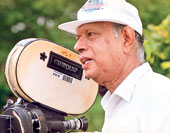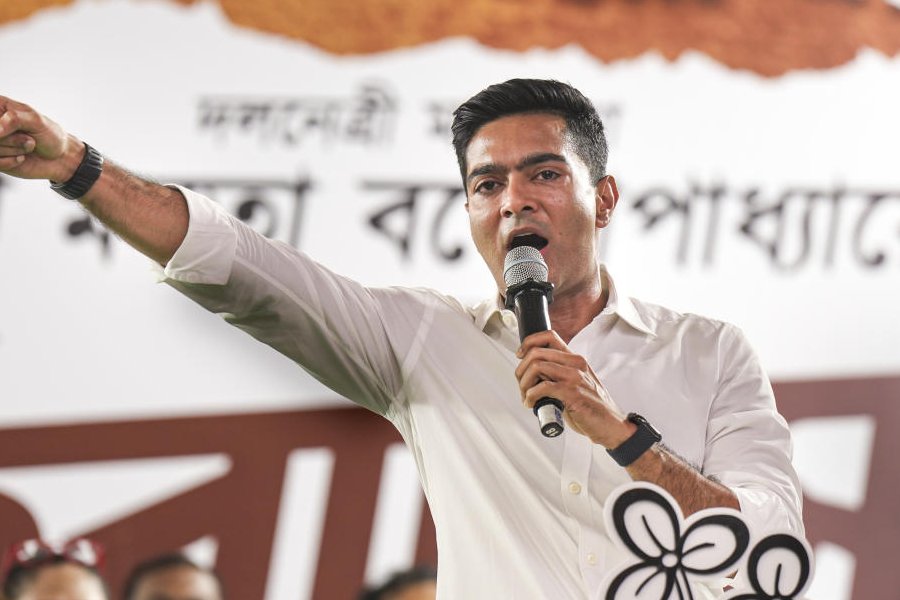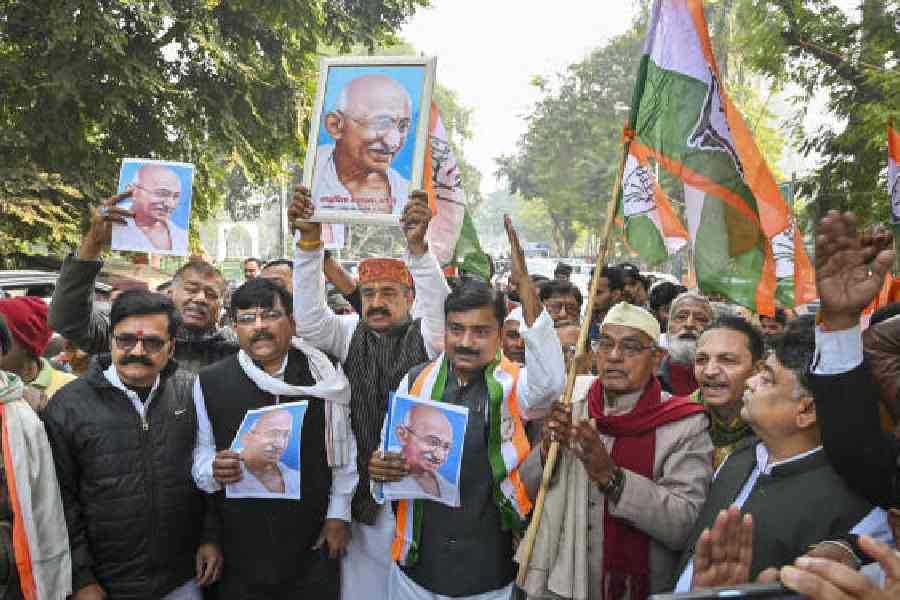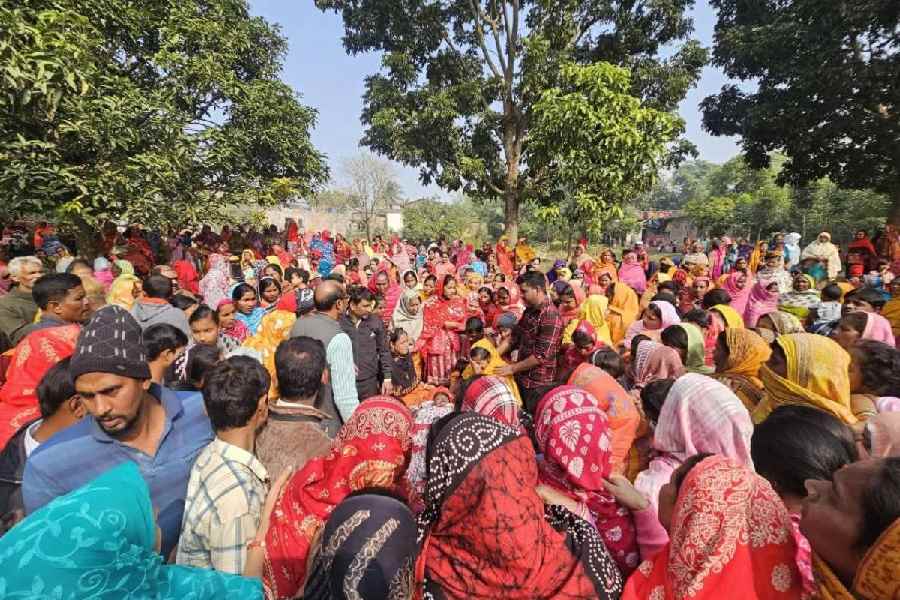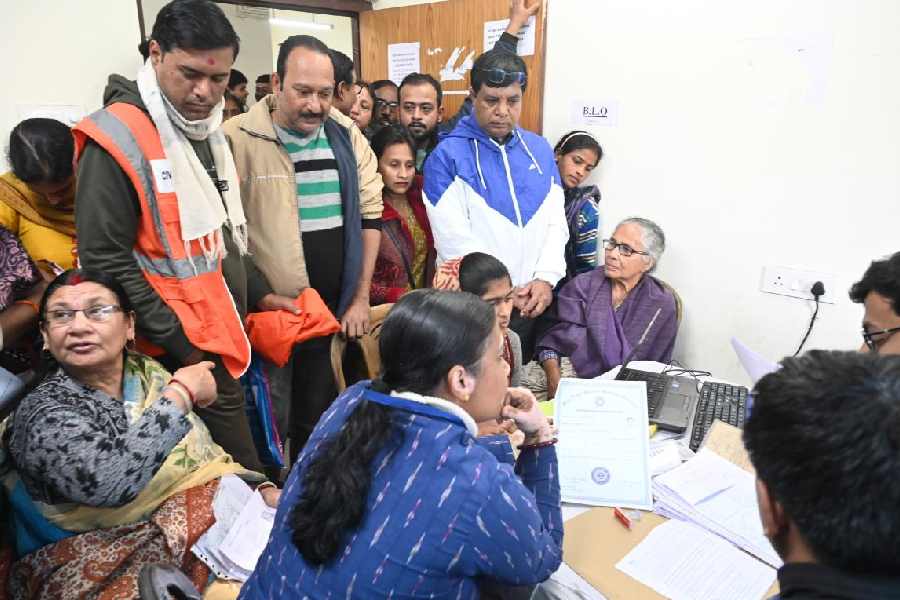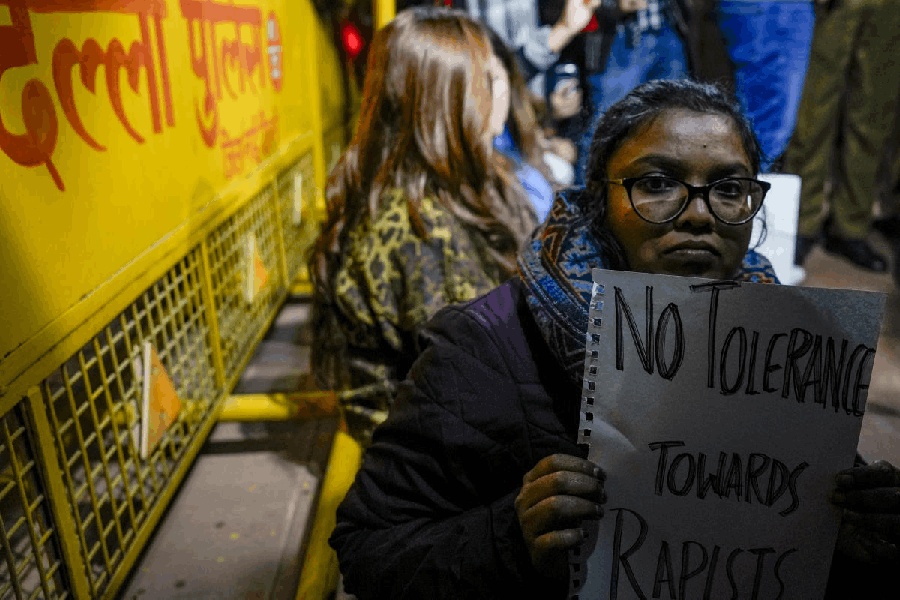 |
| Tapan Sinha at the shoot of Abhagir Swarga at Bolpur in 1996. A Telegraph picture |
It’s drizzling outside and the first floor room in New Alipore is full of shadows. One wonders if Tapan Sinha would have thought the light suitable for a shoot.
But Sinha, who has been forced to lie on his back for two years, isn’t thinking of films. At least that is what he would have us believe. “My mind is blank... In any case I don’t think there is anything more I can do,” he says slowly. The TV remote is lying beside his pillow but he doesn’t watch films anymore. “Just cricket and football, sometimes.”
Here is the maker of a long list of screen classics: Kabuliawala, Khudhito Pashan, Nirjan Saikate, Atithi, Jhinder Bandi, Hansuli Banker Upakatha, Jatugriha, Galpo Holeo Satti, Haate Bajare, Aapon Jon, Harmonium, Ek Je Chhilo Desh, Banchharamer Bagan, Adalat O Ekti Meye, Admi Aur Aurat, Atanka, Ek Doctor Ki Maut and Antardhaan. Each different in content and colour yet each a film about a struggle, the indomitable energy to survive against all odds. Here is the winner of 19 National Film Awards and laurels from international film festivals of Berlin, Venice, London and Moscow.
At age 83 the country has crowned him with the Dada Saheb Phalke Award. Sinha chooses to overlook the fact that no state official called up to congratulate him.
Manoj Mitra, playwright, actor and close friend, is visiting him. “He knows more about me than anyone else,” says Sinha, clasping Mitra’s hands.
Sinha introduced Mitra to the screen in 1989 with Banchharamer Bagaan based on Mitra’s play Sajano Bagaan. Mitra went on to act in Sinha’s Adalat O Ekti Meye, Boidurjo Rahasya, Atanka, Antardhaan, Wheelchair, Ajob Desh and Hutumer Noksha. Mitra was also cast with Soumitra Chattopadhyay for Teen Charitra, a film Sinha had planned in 2006.
“Even the music had been recorded when illness struck again,” says Mitra. Sinha developed a severe heart condition. “He has a colonial hangover and is obsessed with Tagore, but there are few films he hasn’t seen. He has a keen interest in humanity and everyday details, a faith in youth… His films are deep, brave,” says Mitra. “When Tapanda creates a character he tries to capture all its colours. Even if it is just a rickshawpuller he is not content portraying his pain and suffering, he gives us his moments of pride, joy… even cruelty. The passion with which he tries to catch the subtle changes of natural light is rare. He is a wonderful teacher of acting. We used to have rehearsals for two to three months before the shoot, something unthinkable today.”
Mitra says that a careless surgery led to Sinha being bed-ridden. “This happened because of the doctor who installed the pacemaker. Even the best doctors haven’t been able to correct the error and that has triggered all his other ailments. Tapanda could have sued the doctor but he hasn’t even mentioned his name lest the man gets into trouble.”
But ask Sinha about Hollywood and his favourite directors, and the large eyes light up. “I have always been a Hollywood fan. To me it is not just a part of a country, it represents that amazing place where the best directors are given a chance to work as they like,” beams Sinha.
In his memoirs Mone Pore he talks of his childhood in Bhagalpur and Bankura. A screening of A Tale of Two Cities starring Ronald Coleman had mesmerised him. Sinha’s Jhinder Bandi in 1961 was based on the Coleman hit The Prisoner of Zenda.
But it was in Presidency College that he began to see films and by 1946, he was trainee assistant sound-engineer at New Theatres and later joined Calcutta Movietone Studios. In the 50s he got an opportunity to work at Pinewood Studios, London. The next two years Sinha spent soaking in the best of world cinema — Fellini, De Sica, Rossellini. By the time he returned to Calcutta he was ready to make films.
Sinha has little praise for Indian films, especially Bengali films. “Indian cinema has failed to touch life the way Indian literature has done. That can only be because the directors have not taken the trouble to learn their craft, they are weak technically. A film director must have mastery over every element of his art,” says Sinha. “What film directors also need to do, but they rarely bother, is to see everything through a square frame. That is why the film seems to meander and spread chaotically.”
It is a pleasure to listen to Sinha and Mitra discuss their common love: films and directors, from Akira Kurosawa to Elia Kazan, John Ford and Stanley Kramer. Between Mrinal Sen and Satyajit Ray, it is Ray who wins Sinha’s approval. “I am not fond of all Sen’s works. Ray on the other hand has maintained a standard. I am glad that such a splendid film-maker was born here.”
Among his own works Sinha has “no favourites, because even the ones that have won prizes and rave reviews seem to me incomplete. I realise how much more I could have done. No film is ever perfect.”
The long conversation makes him tired. Gazing at the large portrait of his late wife, actress Arundhuti Devi, Sinha falls into a reverie. His left hand moves gently, as if to the beat of an unheard music.

